Miao culture, Hmong, South China
First half of the 20th century
Silver
H.: 25cm; L.: 28cm
Weight: 430grammes
Important rigid three-row necklace, entirely chiseled with zoomorphic and plant motifs. The figures represented are all oriented towards the central medallion animated by a stylized anthropomorphic symbol. It is included in a rectangular medallion with two goats and two roosters facing each other. These two animals are part of the twelve signs of the Chinese zodiac, among the pig, the dog, the monkey, the horse, the snake, the dragon, the rabbit, the tiger, the buffalo and the rat.
The six crested and bearded dragons are long, scaled bodies wound up in the three rows. The end of each of their tail gives rise to a volute pattern that continues in pelletized florets.
This number six refers to the cycle of vegetation. The first dragon is said to be "invisible". He is the seed sown. The second is the germ, the “dragon of the fields” which then becomes a young shoot. It is the "visible dragon". The fourth is the "leaping dragon" referring to flowering and the appearance of fruits. The “flying dragon” for the fifth stage shows the new seeds and pollen. Finally, the sixth dragon is the one who coordinates everything, the celestial dragon, the “hovering dragon”.
The necklace ends in two angled ends, wrapped in silver wire. The rigid clasp is hooked on a conical button.
On plinth.
This ceremonial torque was worn by women.
Text and photos © FCP CORIDON



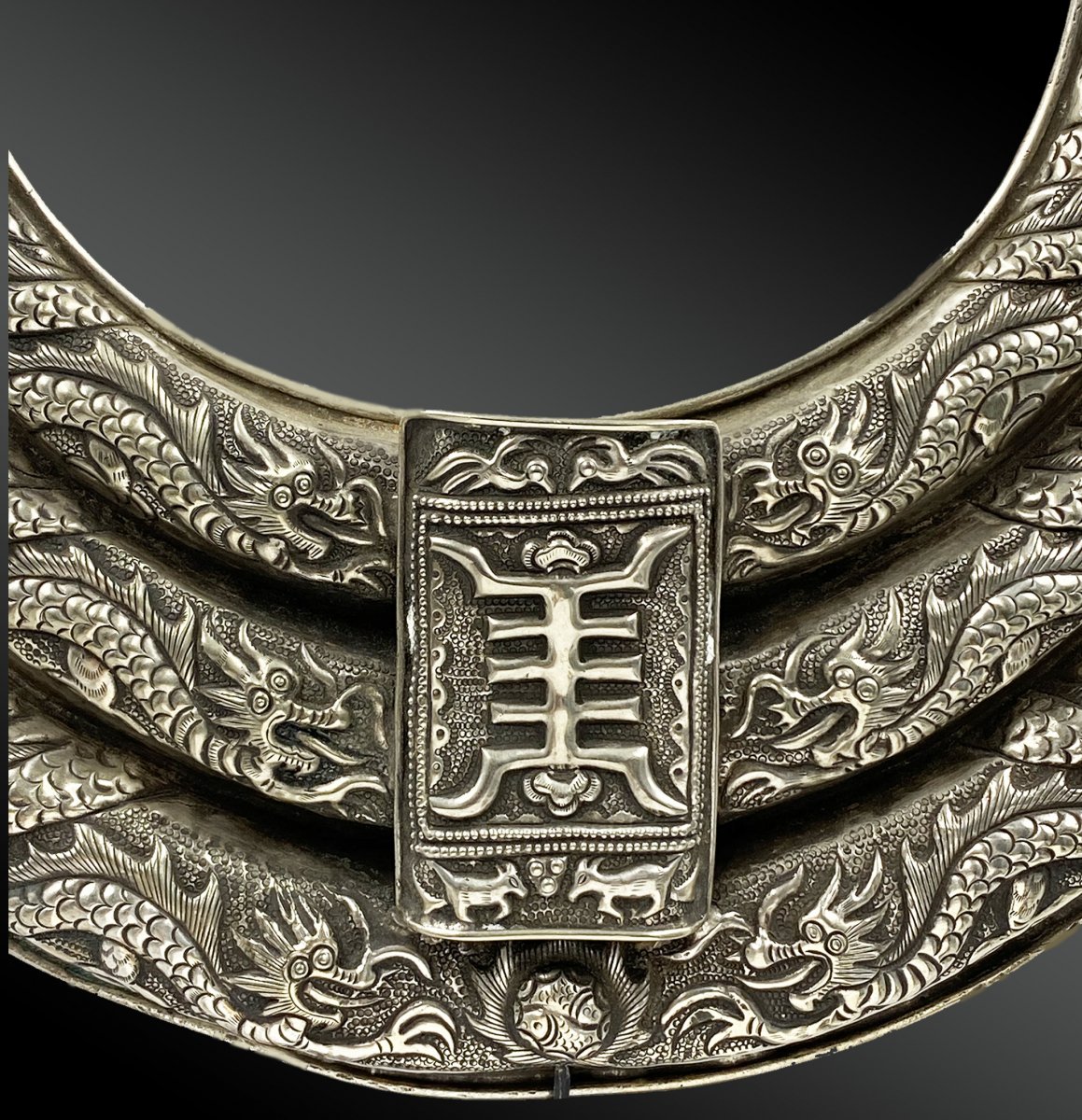
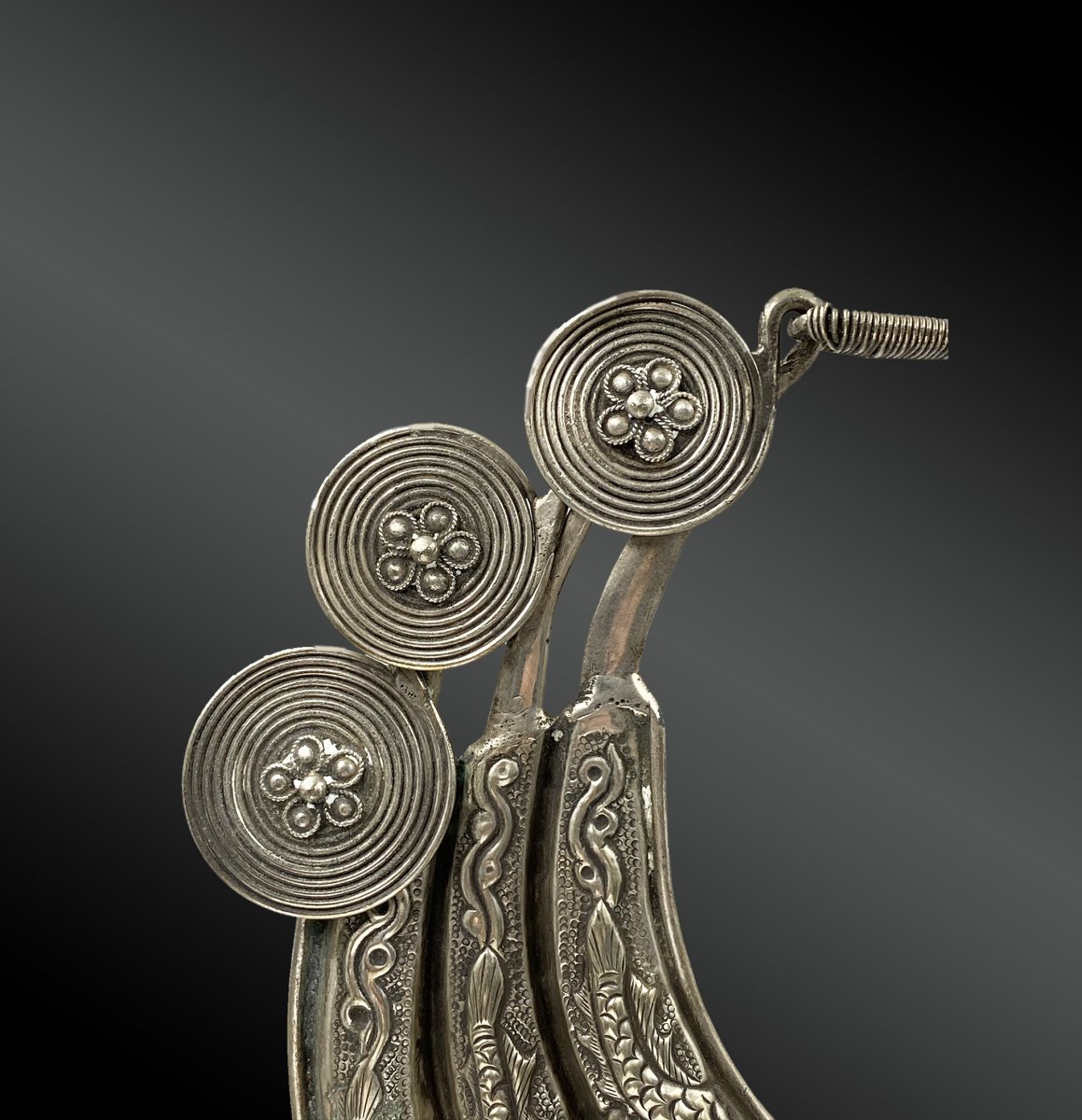
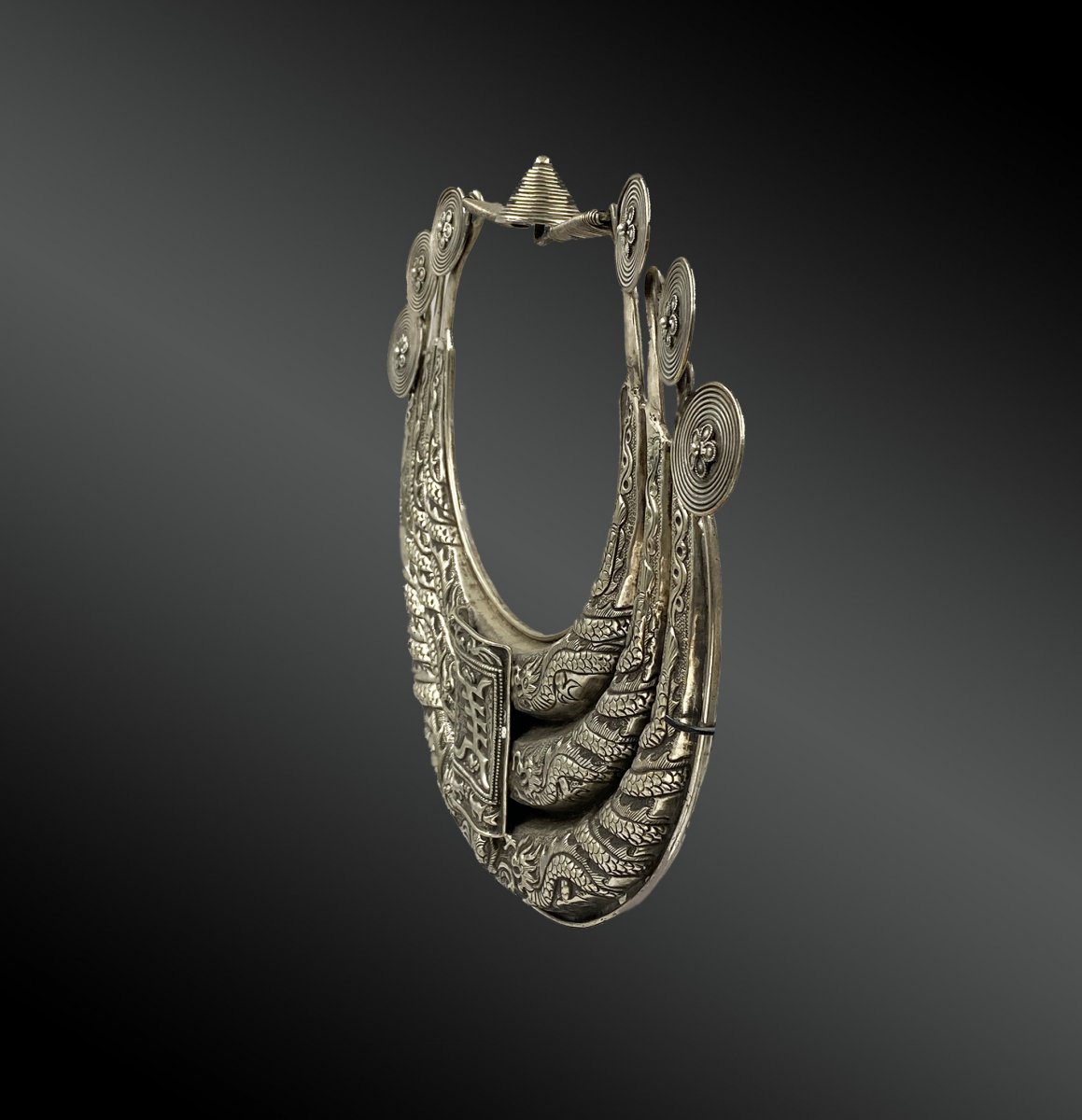
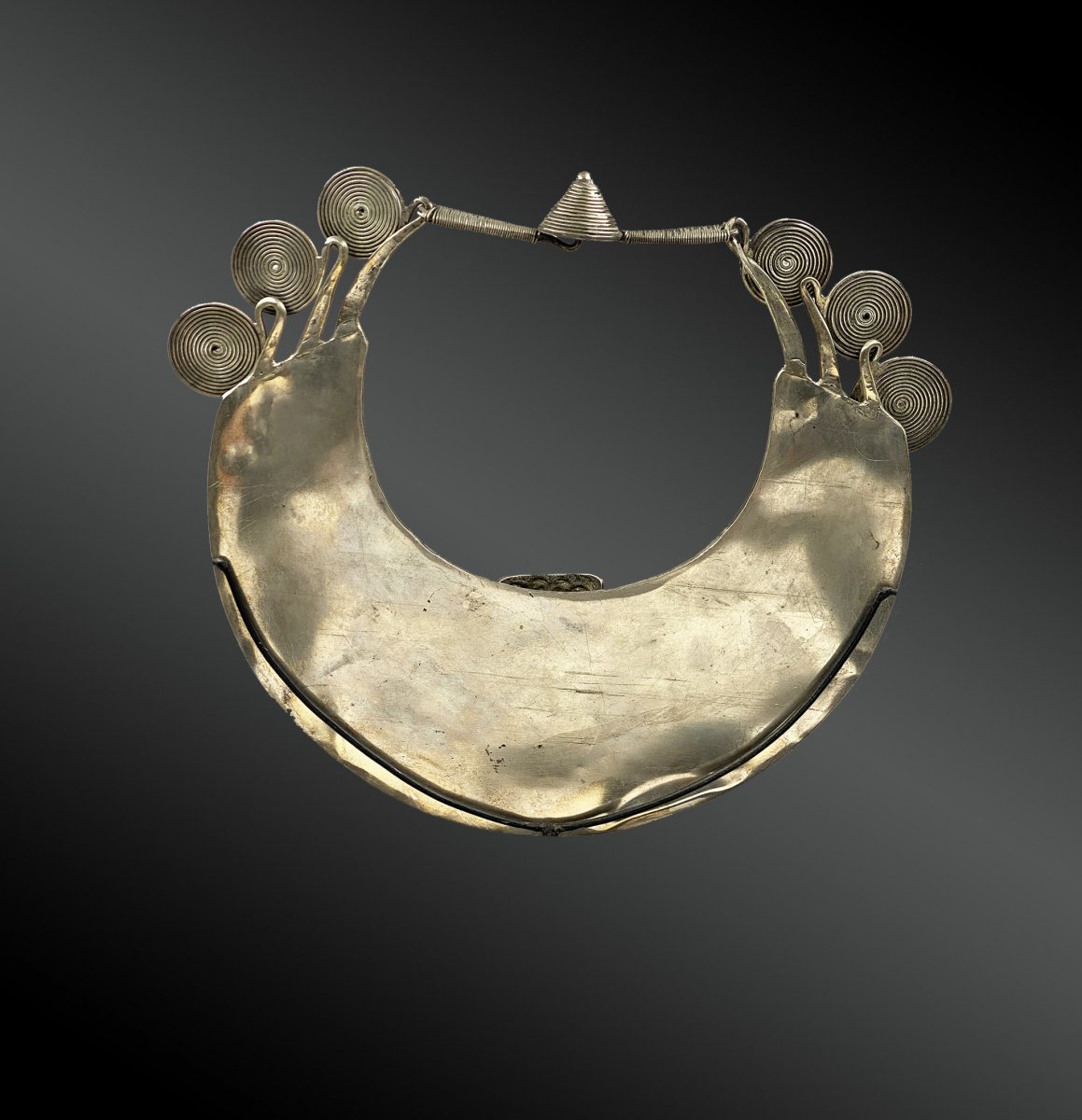
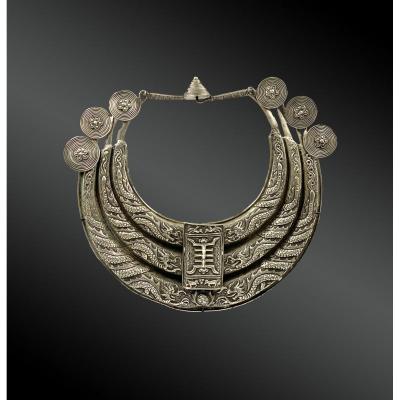






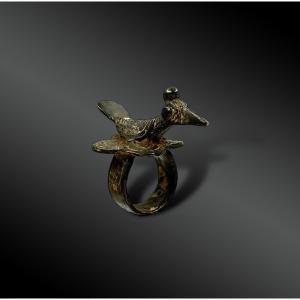



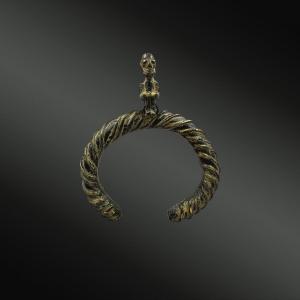
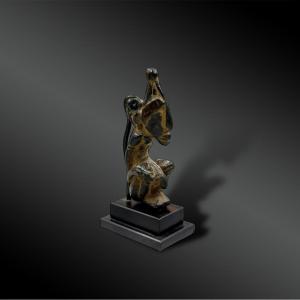




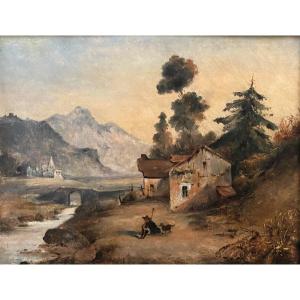

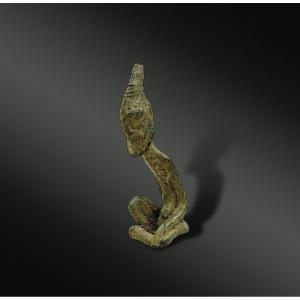
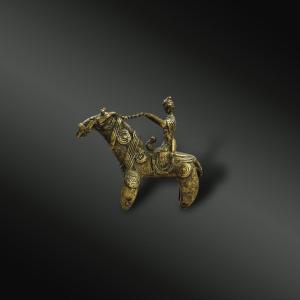
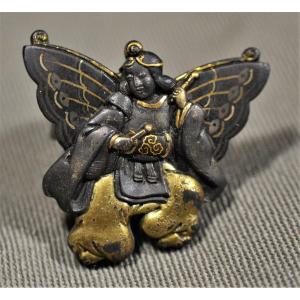

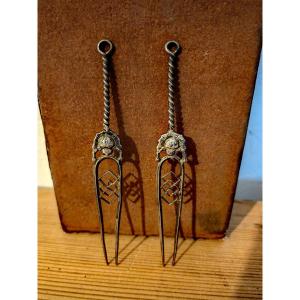
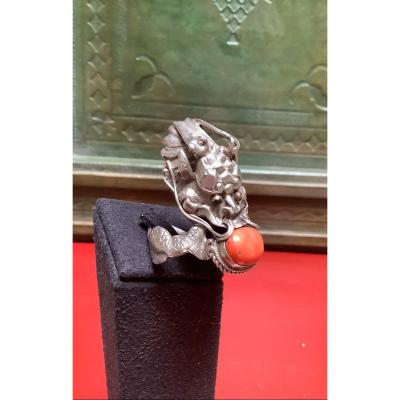




 Le Magazine de PROANTIC
Le Magazine de PROANTIC TRÉSORS Magazine
TRÉSORS Magazine Rivista Artiquariato
Rivista Artiquariato